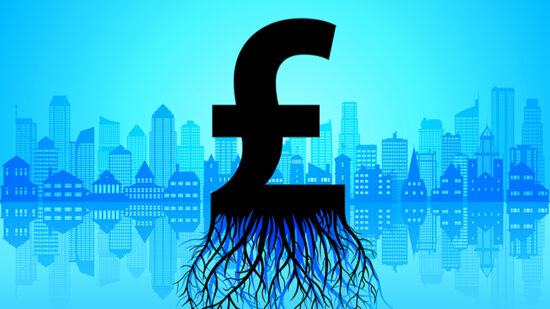Passive vehicles – exchange-traded funds (ETFs) and other portfolios that seek to mirror the performance of a specific stock market index – have proved increasingly popular over the last two decades, attracting legions of investors into every corner of finance – bar one. Still, while the passive sector may have been playing catch-up when it comes to responsible investment, that seems unlikely to remain the case as we head through the 2020s.
BlackRock, the world’s leading ETF provider, has launched 40 new funds focusing on ESG factors in this year alone – and Manuela Sperandeo, the company’s head of smart beta, sustainable and thematic ETFs for the EMEA region, says it has committed to doubling its global range to 150 within the next few years. “We anticipate we will reach our commitments set at the start of the year in a timely manner,” she says, noting the expansion will take in a wider range of asset classes, investment styles and markets.
Where BlackRock leads, other passive providers tend to follow. “We are seeing a record number of passive sustainable funds coming to market,” says Kenneth Lamont, senior research analyst at index provider Morningstar. “We are also seeing providers tweak existing fund ranges.”
Read more from Portfolio Adviser’s Guide to Responsible Investing here
This enthusiasm for ESG on the part of providers appears to mirror that of investors. Even at the height of the pandemic-induced market uncertainty in February and March, BlackRock was able to point to more than $40bn (£31.1bn) of inflows into global sustainable funds – both ETFs and active mutual funds – in the first three months of the year.
Commenting on this 41% year-on-year increase, Sperandeo says: “As investors sought to rebalance their portfolios during the market turmoil, they increasingly preferred sustainable funds over more traditional ones.”
Driven by concern
The drivers behind this wave of investor flows are not too difficult to discern. “There has been more focus on the damage we are doing to the environment; social issues such as inequality and diversity; governance issues around companies that have been found to be lying … the list goes on,” says Camilla Ritchie, senior investment manager at Seven Investment Management. “Investors have decided they do not want to invest in companies that do not pay attention to these issues.”
Yet providers answering the call amid such altruism would only get so far. What is also evident is that responsible and sustainable funds now also appear more than capable of delivering better performance than non-ESG-oriented funds.
US data collated by Morningstar for the first three months of the year shows that while ESG funds were by no means immune to losses over this period, they did less poorly than those of their conventional counterparts. The numbers indicate more than two-thirds (70%) of sustainable funds ranked in the top half of their peer groups while more than two-fifths (44%) ranked in the top quartile. Only around a tenth (11%) finished in the bottom quartile of their respective categories.
Seven’s Ritchie believes there are two main reasons for this relative outperformance. First, by their nature, ESG portfolios tend to steer clear of the sectors that were hit hardest by the pandemic, most obviously oil and airlines. Second, the types of company that score well in ESG terms are potentially better at assessing risk – and, while the Covid-19 crisis could hardly have been predicted, such businesses were more prepared for the unexpected.
“Using ESG ETFs is a way of avoiding the worst offenders and those that are high-risk,” Ritchie concludes. “And when there is demand for products, providers come in to fill the gap.”
Passive voice
While the enthusiasm from providers is clear, however, questions of efficacy still hover around the sector, not least because of what would appear to be the glaring contradiction of using passive vehicles when the raison d’être for putting money to work with ESG aims would be that it was, well, active.
“The rigid nature of passive investing does not lend itself to the nuanced world of ESG,” says Morningstar’s Lamont. “For example, liquidity constraints mean passive strategies must steer clear of smaller, often more impactful companies. Those seeking the most ESG impact might expect a level of engagement between fund management and holding not possible in a passive wrapper.”
Yet Rumi Mahmood, head of ETF research at robo-adviser Nutmeg, argues such a view is based on the false premise that an investor can be active in only one way. “Absence of consequence – that an ETF cannot sell a stock and walk away – is not absence of activity or progress,” he points out. “Stewardship wielded through passive investing is powerful precisely because one cannot sell and walk away – it is more continuous, consistent and influential.”
That ‘in it for the long term’ message is echoed by Mark Fitzgerald, head of product specialism at Vanguard, who reflects, when it comes to ESG, passive is an “unfortunate term”. “We are a large indexer – we control $4trn of AUM – so when it comes to building relationships, companies seek us out because we are a perpetual and substantial holder,” he says.
Vanguard’s aim is not to have “a public shouting match” with companies it is invested in, Fitzgerald adds, noting: “That would mark a relationship breakdown.” Instead, Vanguard seeks dialogue with companies.
Agony of choice
A more nuanced criticism of passive funds stems from the bewildering set of index criteria and constituent selections that results, in part, from the demands of the fund providers. Seven’s Ritchie points out that investors can now align their ESG choices in a way that was not possible even a few years ago.
Not all index providers are the same, she adds, and it is important to understand the differences between the varieties of ESG, ethical, impact, responsible and sustainable investment – and how each index provider views those particular factors. “Tesla, for example, is viewed as a ‘good’ ESG company by MSCI but a ‘bad’ one by FTSE Russell because they have different ways of looking at the ESG factors,” says Ritchie.
In a similar vein, Matt Brennan, head of passive portfolios at AJ Bell, says: “For ESG, it is important to understand precisely the companies you’re invested in, be this for business controversies, ESG scores, carbon output and so on. The ability to see this information on a daily basis makes the ETF structure ideal for ESG investing.”
This idea has real resonance among the institutional funds of pensions and insurance company investors, and it is here where ESG is picking up momentum. “Institutional investors led the way in the adoption of ESG investing, in part due to regulatory developments in the UK,” says Ashley Fagan, global head of ETF, indexing and smart beta strategic clients at Amundi.
Ritchie sees this as particularly true for insurance companies: “They have calculated green investing is lower risk as it avoids some of the riskier areas of investment in ESG terms – and since insurance companies have been paying out on more flood and fire claims, their business is being directly affected by climate change.”
Meanwhile, Fagan says the switch to green has “demonstrated it is possible to invest sustainably while maintaining diversification”. “And, importantly, this has not meant giving up on performance. With evolving UK regulation for advisers around sustainability, we expect to see continued growth in interest in ESG solutions.”
From individual savers to the largest institutional investors, the flow of money continues towards responsible investments – and, as it has in other markets, the passive sector is stepping up to take a bigger share. “Investors are embracing ESG as a fundamental investment driver,” says Clement Reuter, head of ETF and passive investment at UBS, which recently saw its ESG S&P500 fund pass the $1bn mark.
“As demand continues to grow and sustainable assets amass more capital, we will see the investment landscapes transform even further. This is a trend we believe is here to stay.”
This article first appeared in Portfolio Adviser’s Guide to Responsible Investing







